Nestled across 7,000+ islands and steeped in a history of cultural influences, the Philippines boasts a rich and deliciously diverse cuisine. From its famed adobo to technicolour halo-halo, each dish tells a unique story.

Travelling for love is an unparalleled experience, especially when it involves a destination as culturally vibrant as the Philippines. We recently had the pleasure of celebrating two lovebirds’ nuptials, which was the perfect opportunity to indulge in the local cuisine.
Despite its delicious food scene, Filipino fare can sometimes be overshadowed by its nearby Southeast Asian countries (with the restaurants of some of the latter ubiquitous in my local neighbourhood!).
With little prior experience of this cuisine, I was keen to learn more – what are its defining flavours? Popular ingredients? Must-try dishes?
Below’s blog talks about our experience with Filipino food. Full disclaimer: while I share what we learnt, we’re simply keen travellers. The best person to ask about the cuisine is a local!🇵🇭

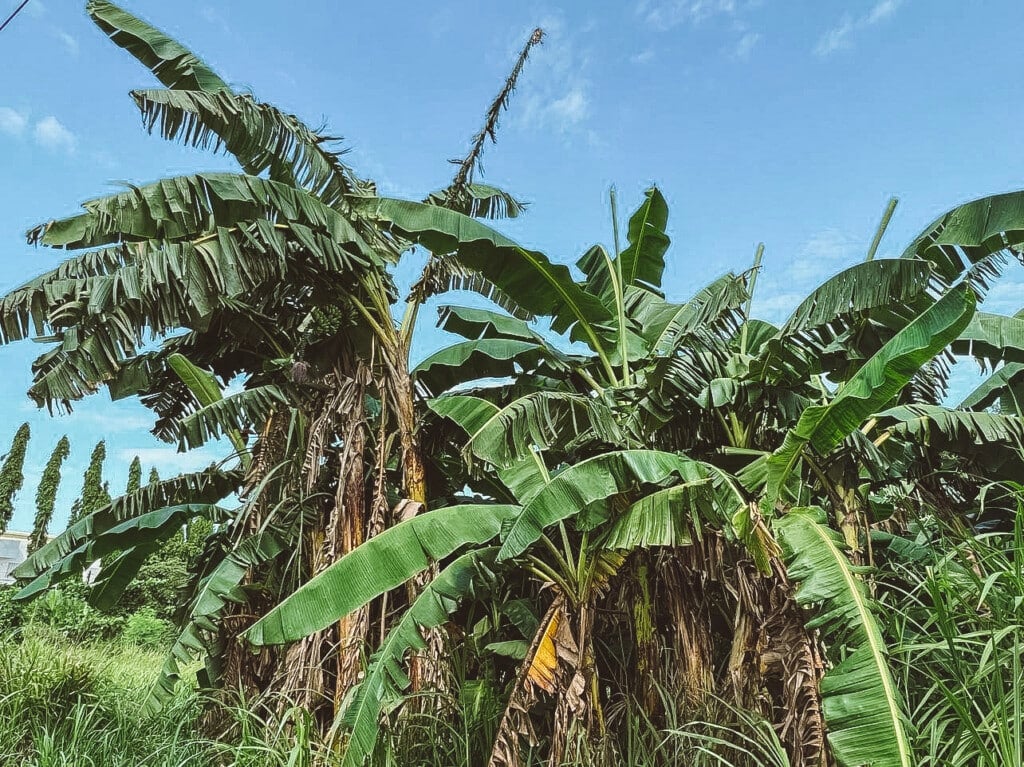

The Building Blocks of a Cuisine
Two weeks is barely enough time to scratch the surface of any cuisine, let alone an archipelago with thousands of islands. However, we quickly discovered a rich and diverse food culture on offer.
Its tropical climate, indigenous ingredients and vast regional diversity have shaped Philippine cooking for centuries; along with significant cultural influences from Malay and Chinese settlers and traders, to Spanish and American colonisation (Cuisine and Culture: A History of Food and People, 2011).
This unique blend has resulted in an incredibly diverse cuisine characterised by a fusion of flavours, dishes and cooking techniques.
For instance, calamansi, a versatile and zingy native fruit, is widely used to add flavour, acidity, and freshness to various dishes—from the freshness of kinilaw (Filipino ceviche), to the comforting warmth of sinigang (a sour, savoury soup). Whereas cultural influences, like that of Chinese cuisine, are evident in beloved dishes like lumpia (Filipino spring rolls) and pancit (noodle dishes).
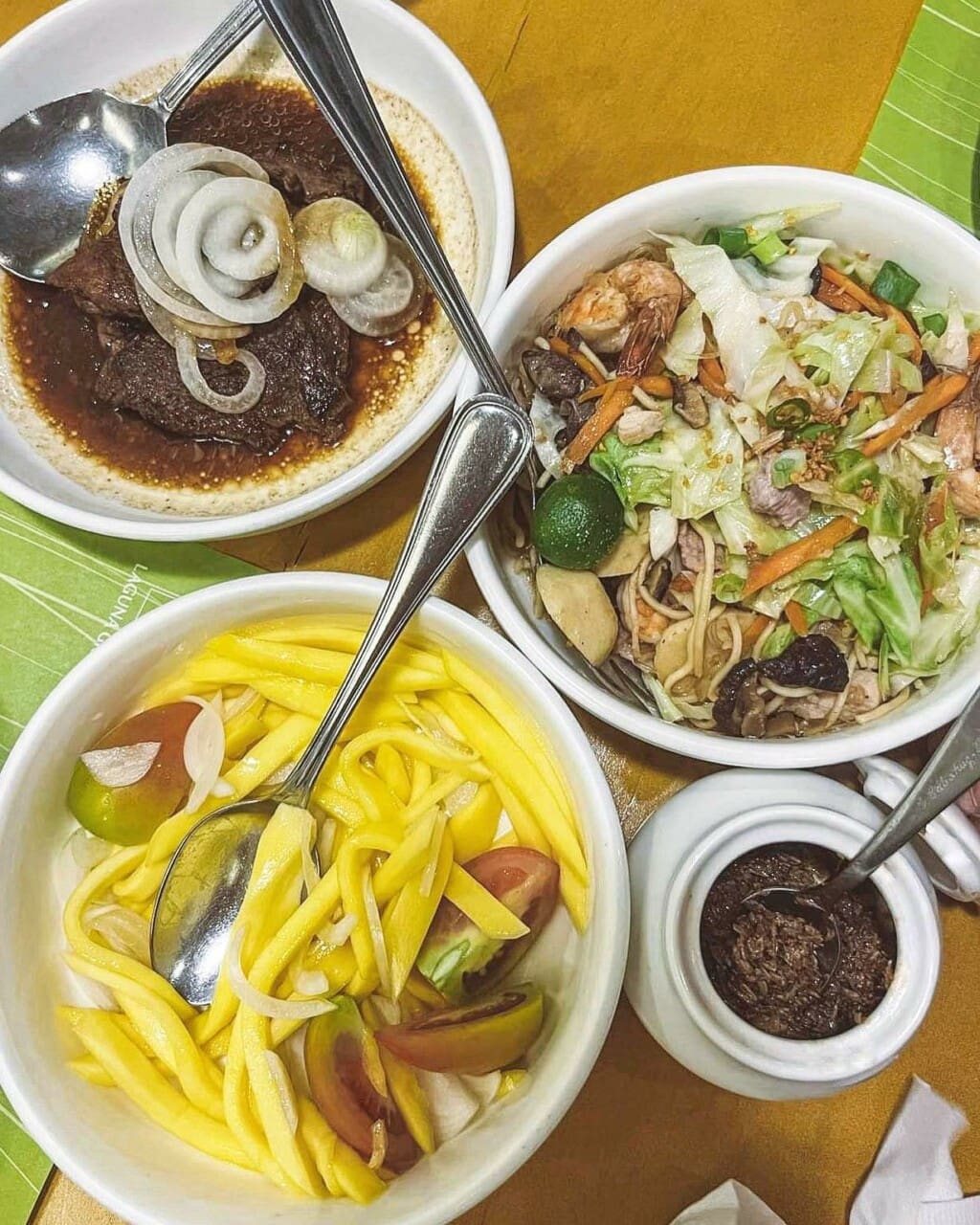
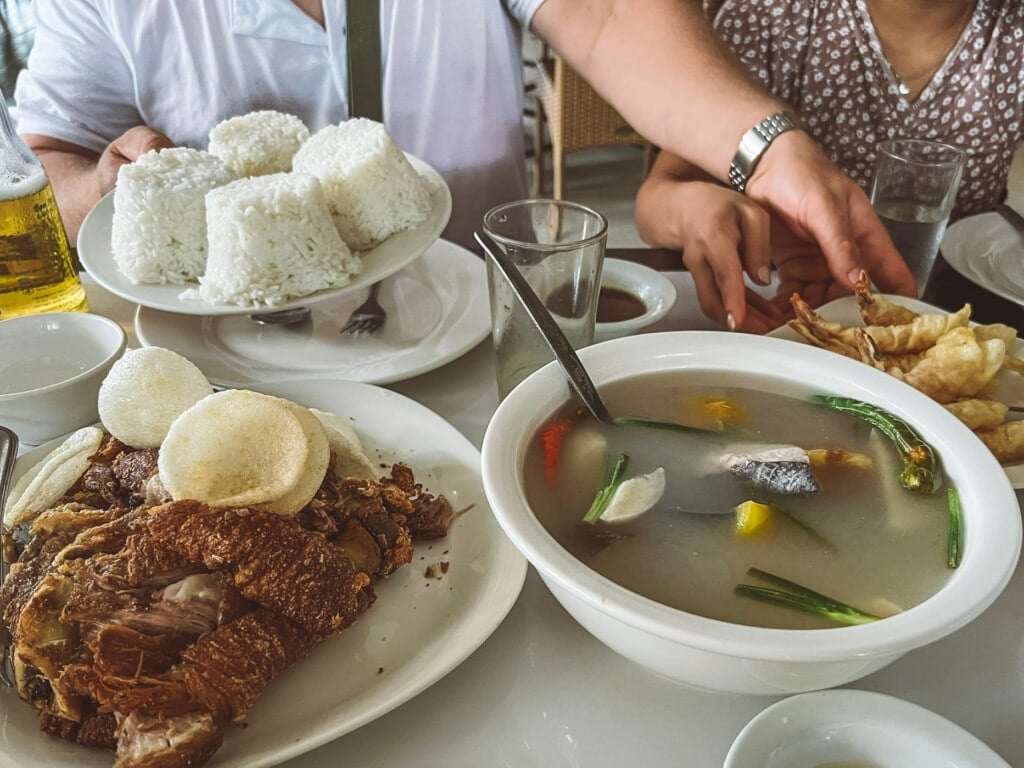
Filipino Food & Flavours
As we ate and ate, we noticed a few cuisine themes. While regional variations and exceptions always exist, overall we found Filipino fare:
- Hearty and satisfying, akin to homestyle cooking, with comfort food vibes. Think soups and stews; crunchy, salty and deep-fried snacks; delicious sweet treats and, of course, rice at every meal.
- Has three dominating flavours: salty, sour and sweet. In her book Tikim: Essays on Phillipine Food and Culture, esteemed Filipino food writer Doreen G Fernandez writes about how these orchestrate the Philippine taste (and bitter, to a lesser extent). Travelling through the country, you really see each play out in dishes, both separately and together.
- There’s a love for meat, particularly pork. Lechon, a whole roasted pig, is a popular centrepiece for festivities (like weddings), while longganisa (sausage) and tocino (sweet cured pork) are common breakfast foods. There’s a focus on nose-to-tail cooking, with minimal waste.
- Rice, rice, rice. Holds immense significance in Filipino culture, cuisine and daily life, and is the staple food that underpins meals, from breakfast through to dinner (Cuisine and Culture, 2011).
- It shares some similarities with its Southeast Asian neighbours, but with its own distinctions. Southeast Asian dishes have a reputation for bold multi-ingredient curry pastes, dishes stacked with spices and plenty of fresh ingredients. While Filipino food features fresh ingredients, like seafood, fruit, and vegetables, it’s not as fresh-focused as Vietnamese or Thai cuisine. It’s also not as spicy or heavily spiced as Indonesian or Malaysian.
Food travellers tip: in Filipino dining, the main utensils offered are a spoon and fork, rather than a knife. The spoon serves the dual purpose of scooping liquids and cutting foods, making it practical for enjoying the range of stews, soups and well-cooked meats in Filipino cuisine.
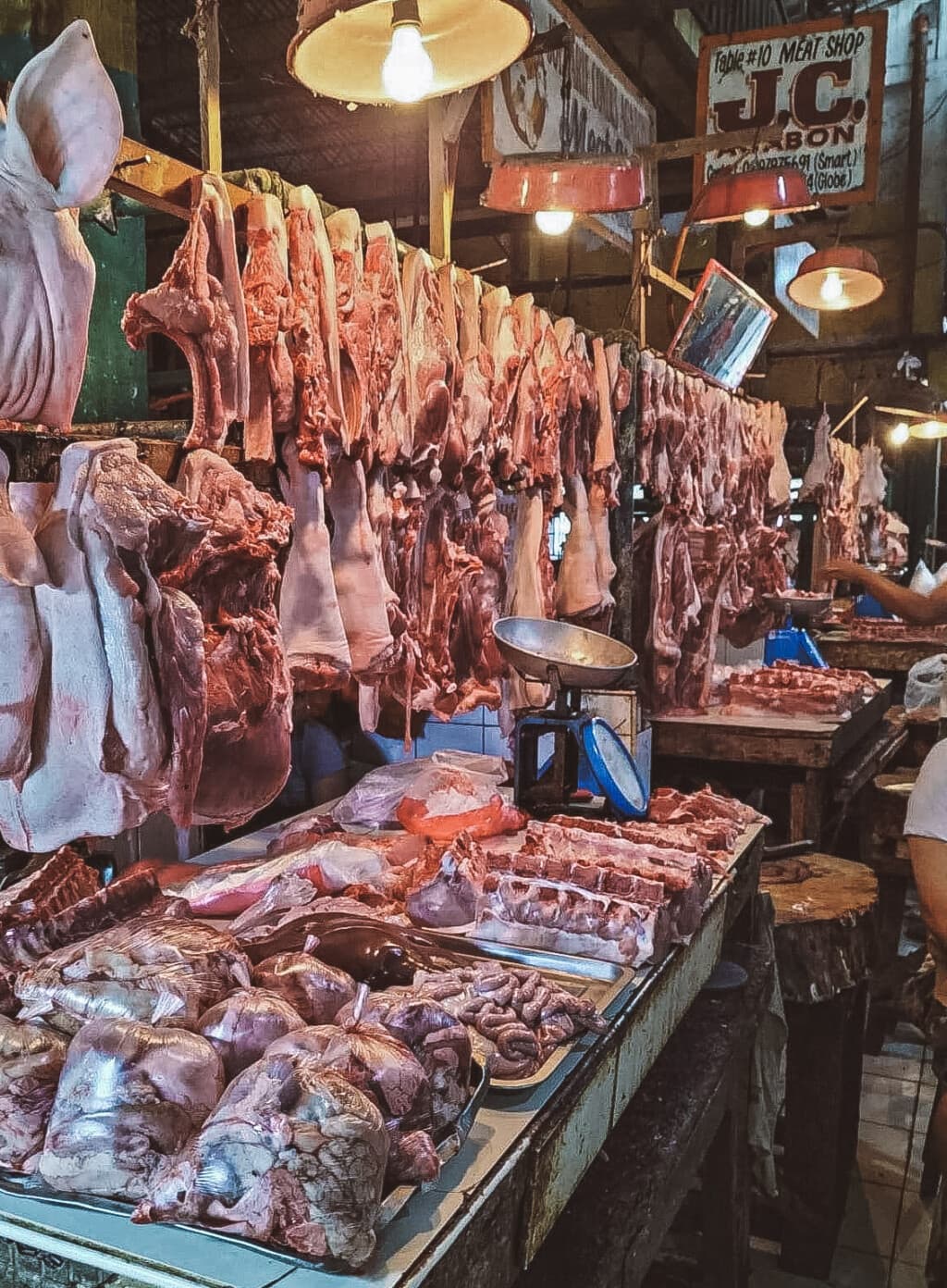
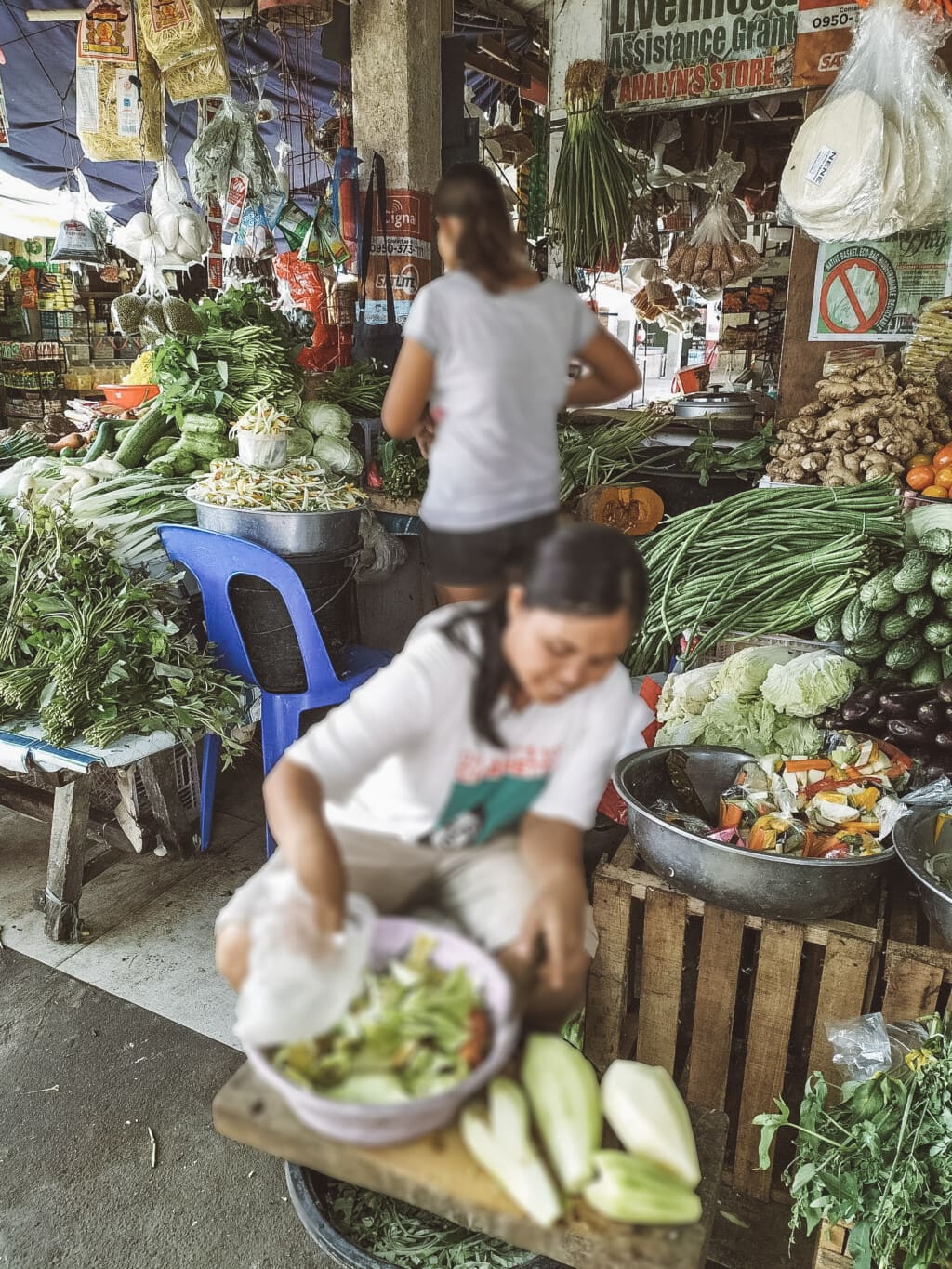
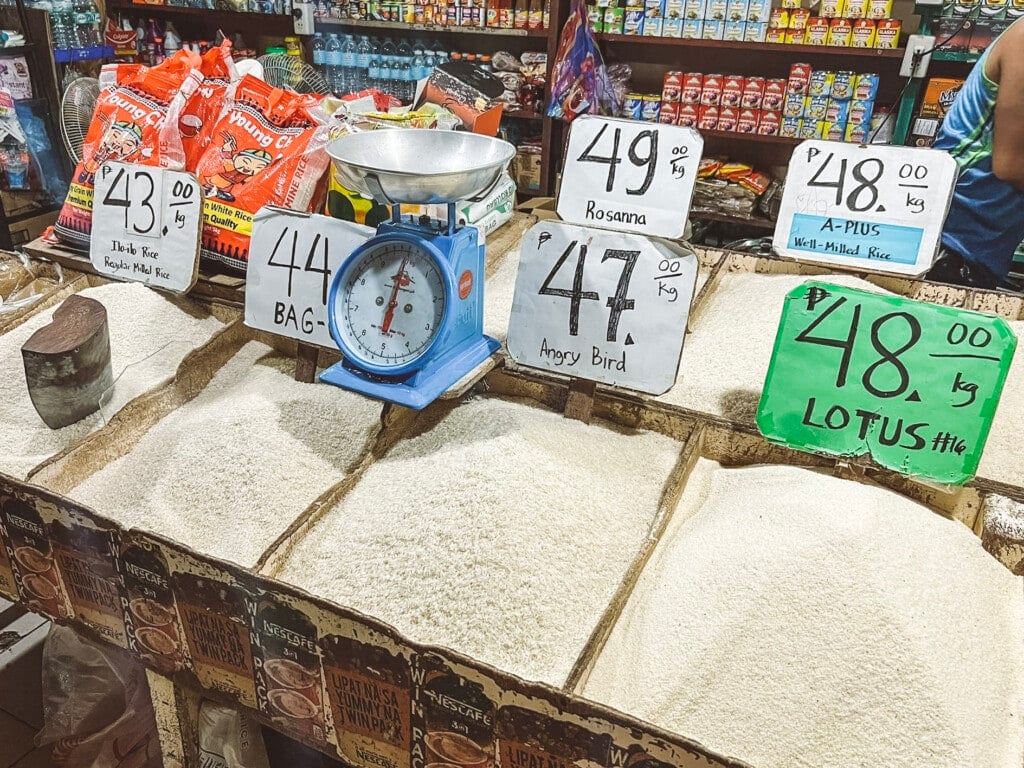
Tropical Fruit & Coconuts Galore
With its warm and humid climate, the Philippines is a haven for tropical fruit – and some of the best you’ll taste.
There are many small-scale stalls selling produce at markets or street side, expertly stacked into towering mounds of coconut, bananas, watermelon, pineapples, calamansi, and even the (notoriously smelling) durian.
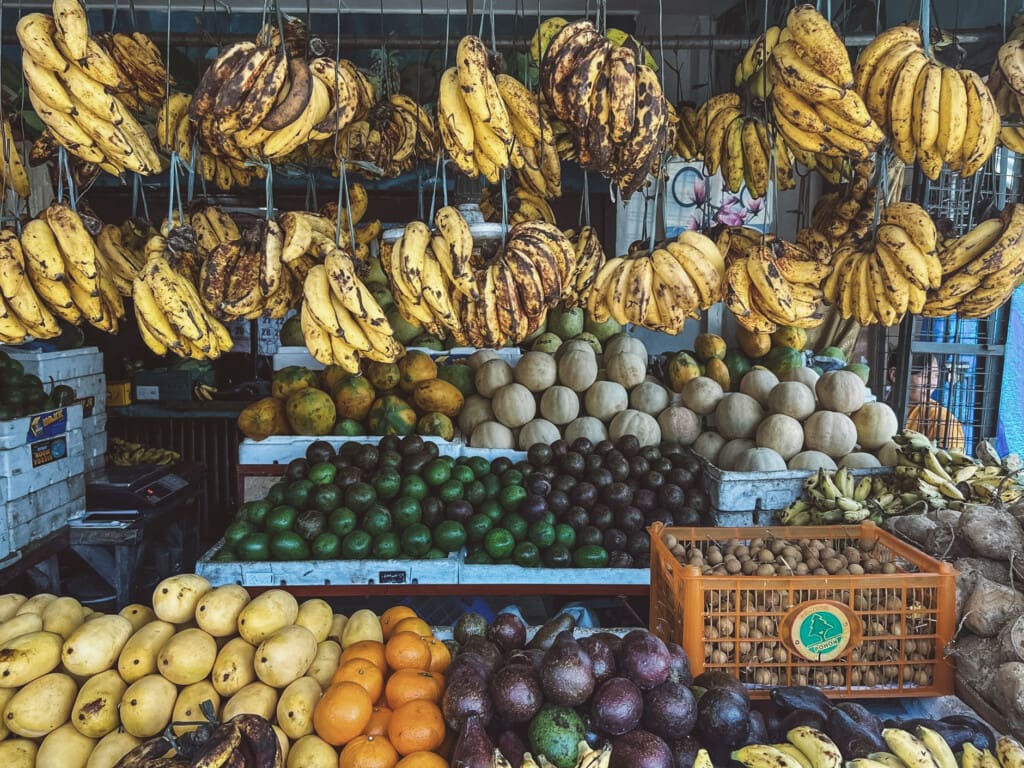
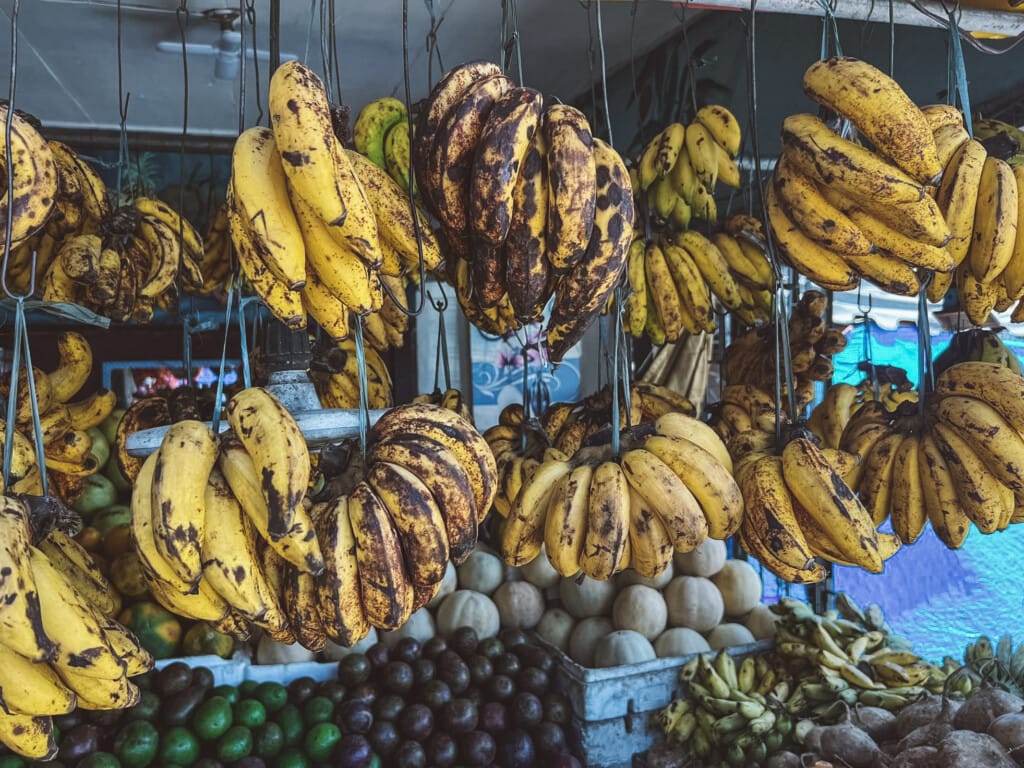
But, if there was one tropical fruit to rule them all it’s the Philippine aka Carabao mango.
This fruit is globally renowned for its sweet exotic taste, and often revered as one of the best-tasting in the world (I attest. Think mango on steroids. Mango injected with mango flavour!).
Whether you’re a fruit lover or not, be sure to try it when you visit the Philippines – you won’t be disappointed🥭.
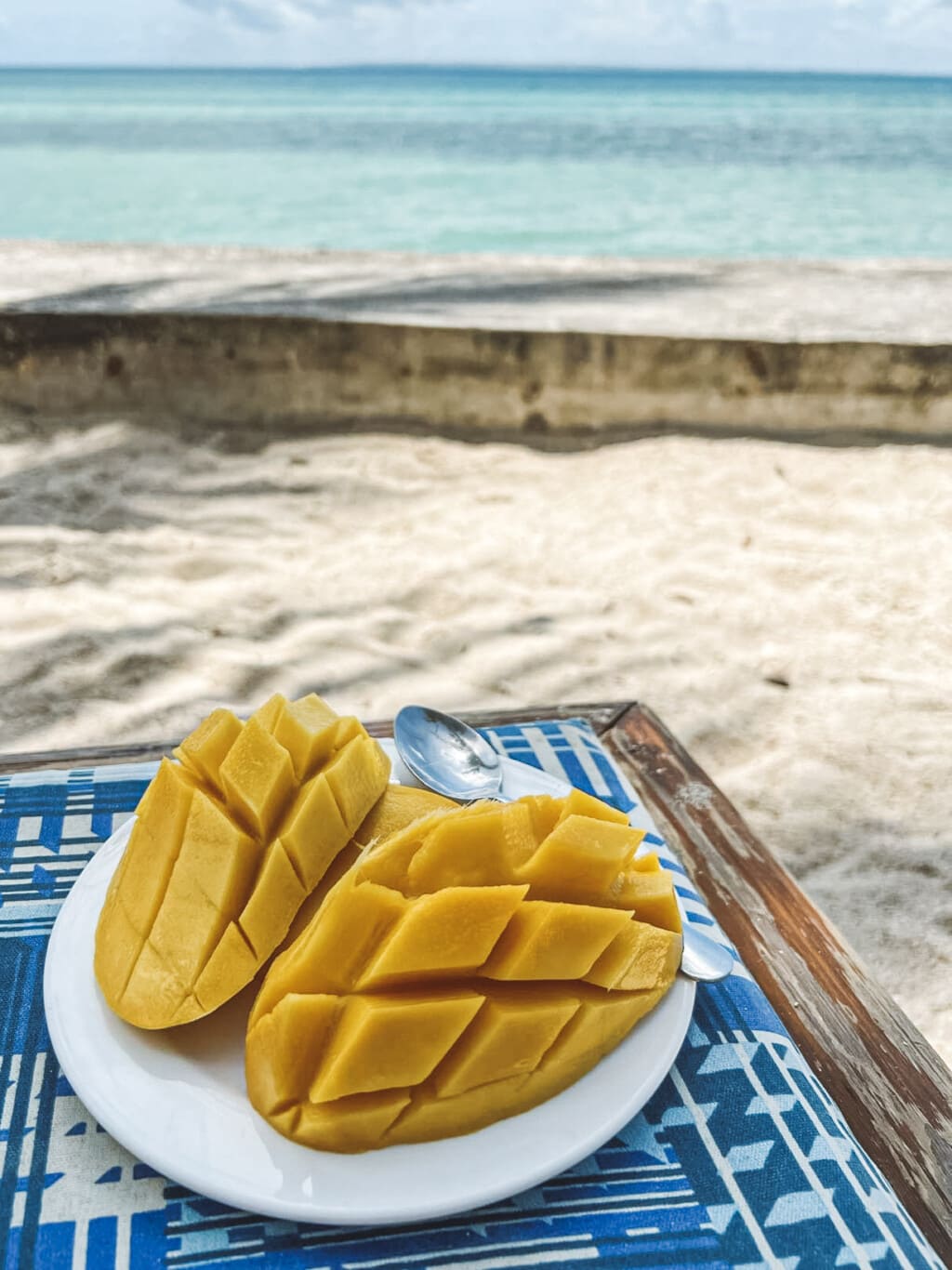
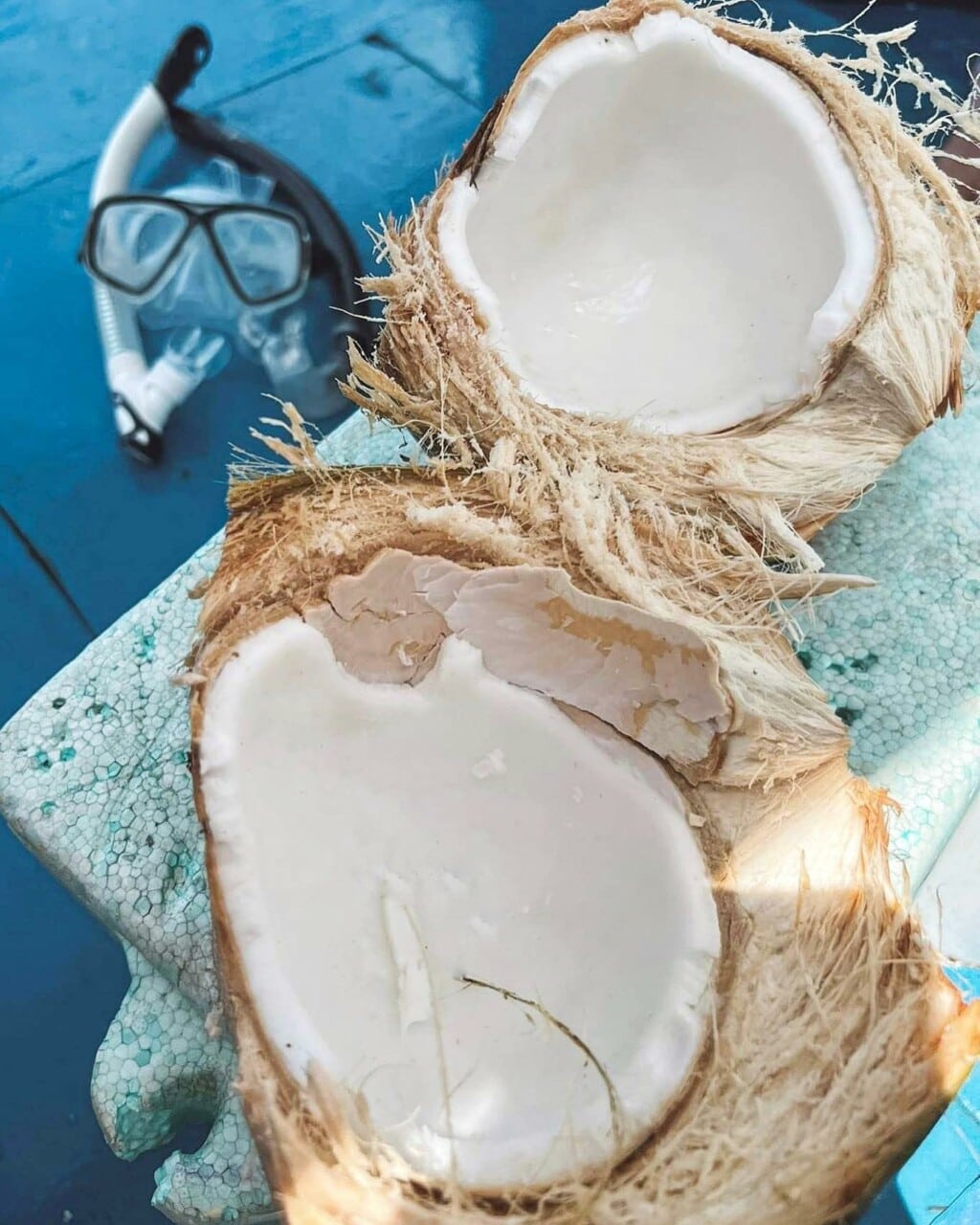
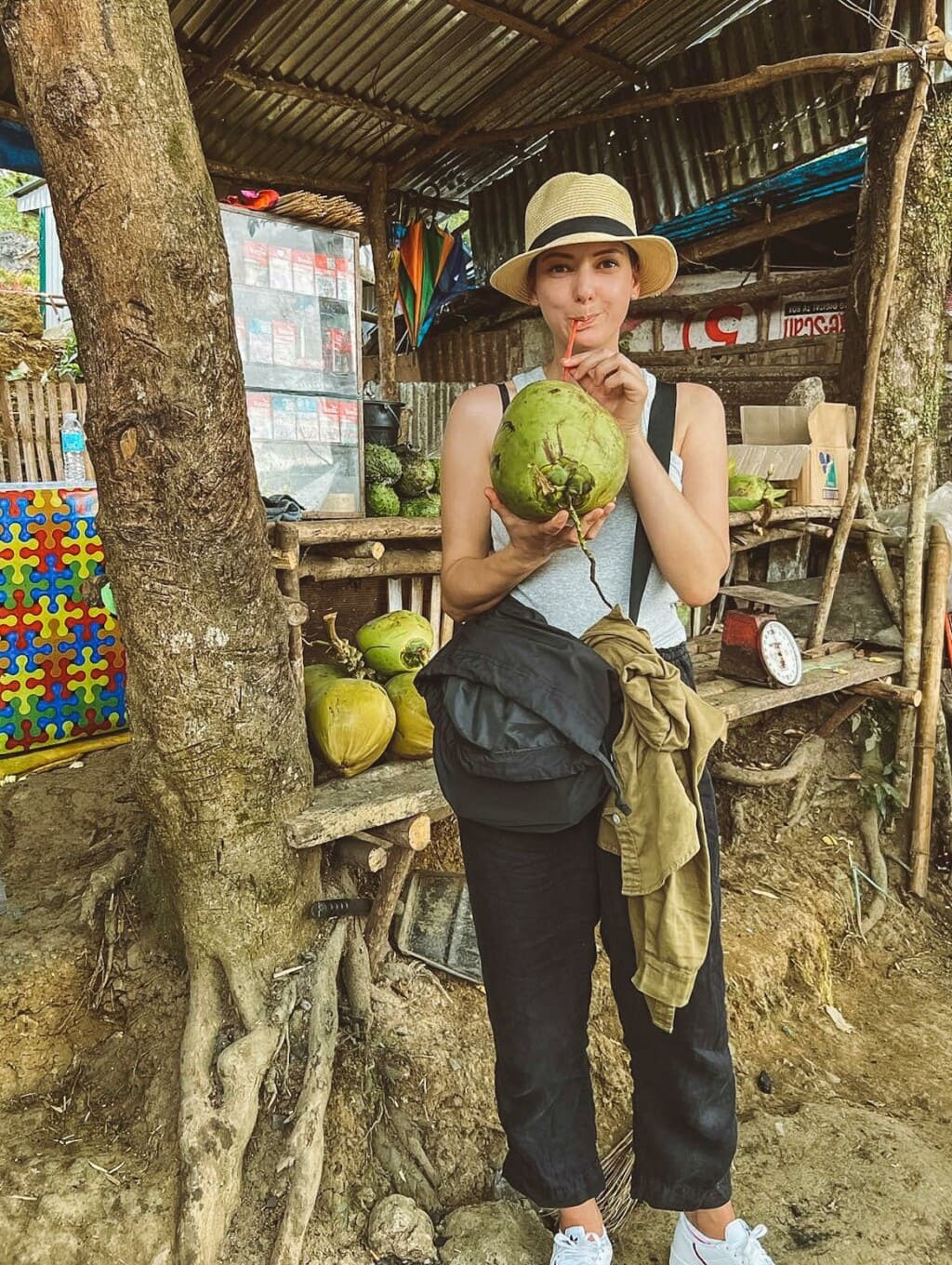
Must-Try Filipino Eats
Like any cuisine, the Phillipines has a range of dishes synonymous with it.
Here are a few (of many!) to seek out:
- Adobo. A national culinary icon, famed for its savoury, slightly tangy-sweet, taste. It typically consists of meat, often pork or chicken, marinated and braised in vinegar, soy sauce, garlic, bay leaf and peppercorns.
- Silog. A traditional Filipino breakfast, that’s wildly filling and satisfying, to keep you going throughout the day. It features garlic fried rice and a sunny-side-up egg, served with a choice of meat or seafood.
- Kare-kare. A tasty stew with a savoury peanut sauce and tender meat, often oxtail or tripe. Typically served with shrimp paste (bagoong) on the side.
- Lechon. A traditional dish featuring a whole pig, slow-roasted to perfection, resulting in crispy, golden skin and tender, flavourful meat. It’s often served as the centrepiece of festive occasions.
- Crispy pata. Deep-fried pork knuckles or hocks that are crispy on the outside and tender on the inside. Usually served with a soy-vinegar dipping sauce.
- Chicken insal. One cannot go to Bacolod without trying chicken insal! These marinated and grilled juicy chicken pieces are both smokey and tangy.
- Halo-halo. The famous Filipino dessert featuring a mix of crushed ice, sweetened fruits, jellies, beans, and various toppings, topped with evaporated milk and, sometimes, ice cream.
- Leche Flan. A rich and creamy caramel custard dessert made from a mix of eggs, condensed milk and caramelised sugar. So smooth and decadent.
- Mango float. A no-bake dessert made with layers of graham crackers, sweetened whipped cream and fresh ripe mangoes. It’s chilled to perfection for a refreshingly indulgent sweet treat.
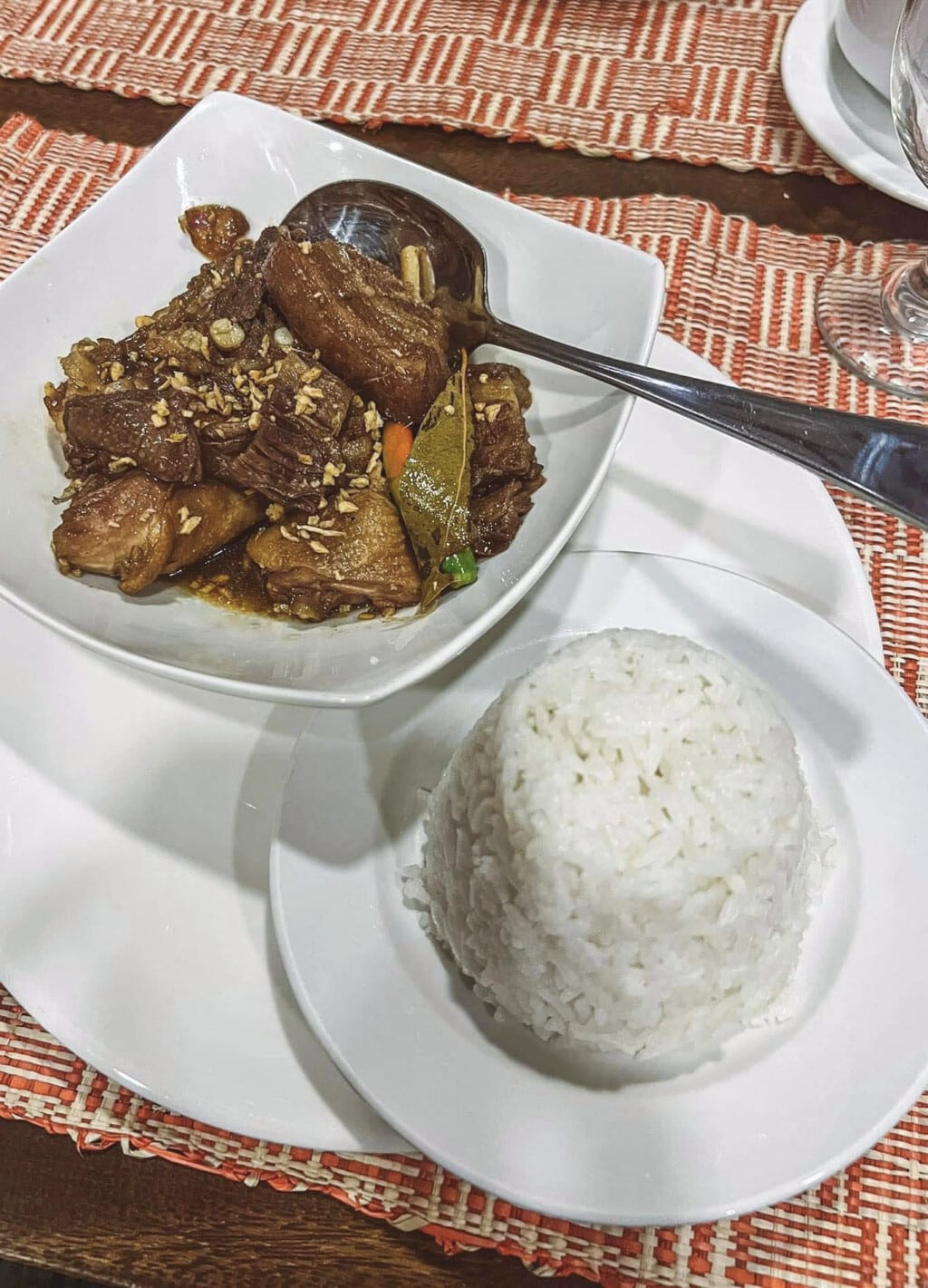
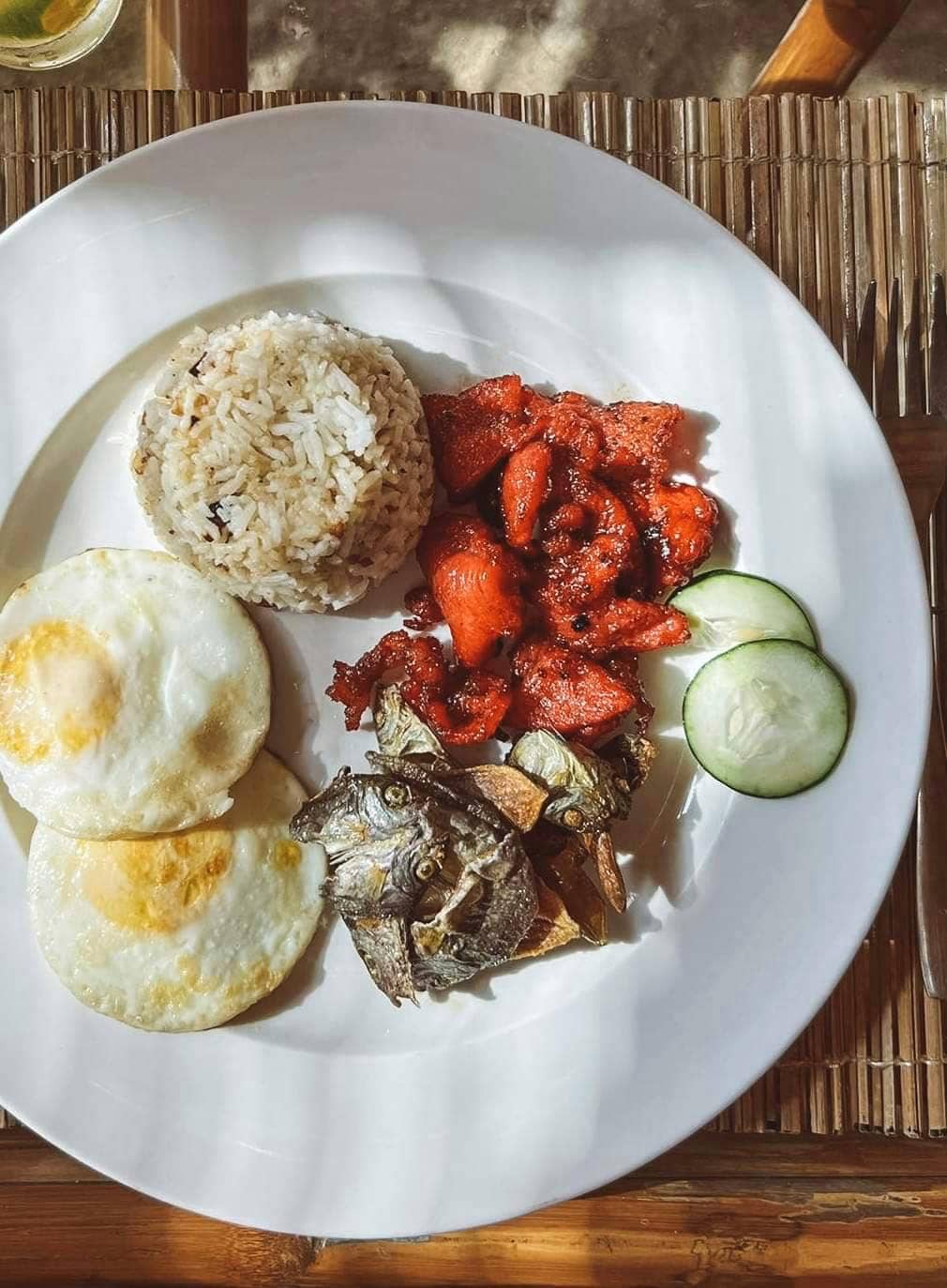
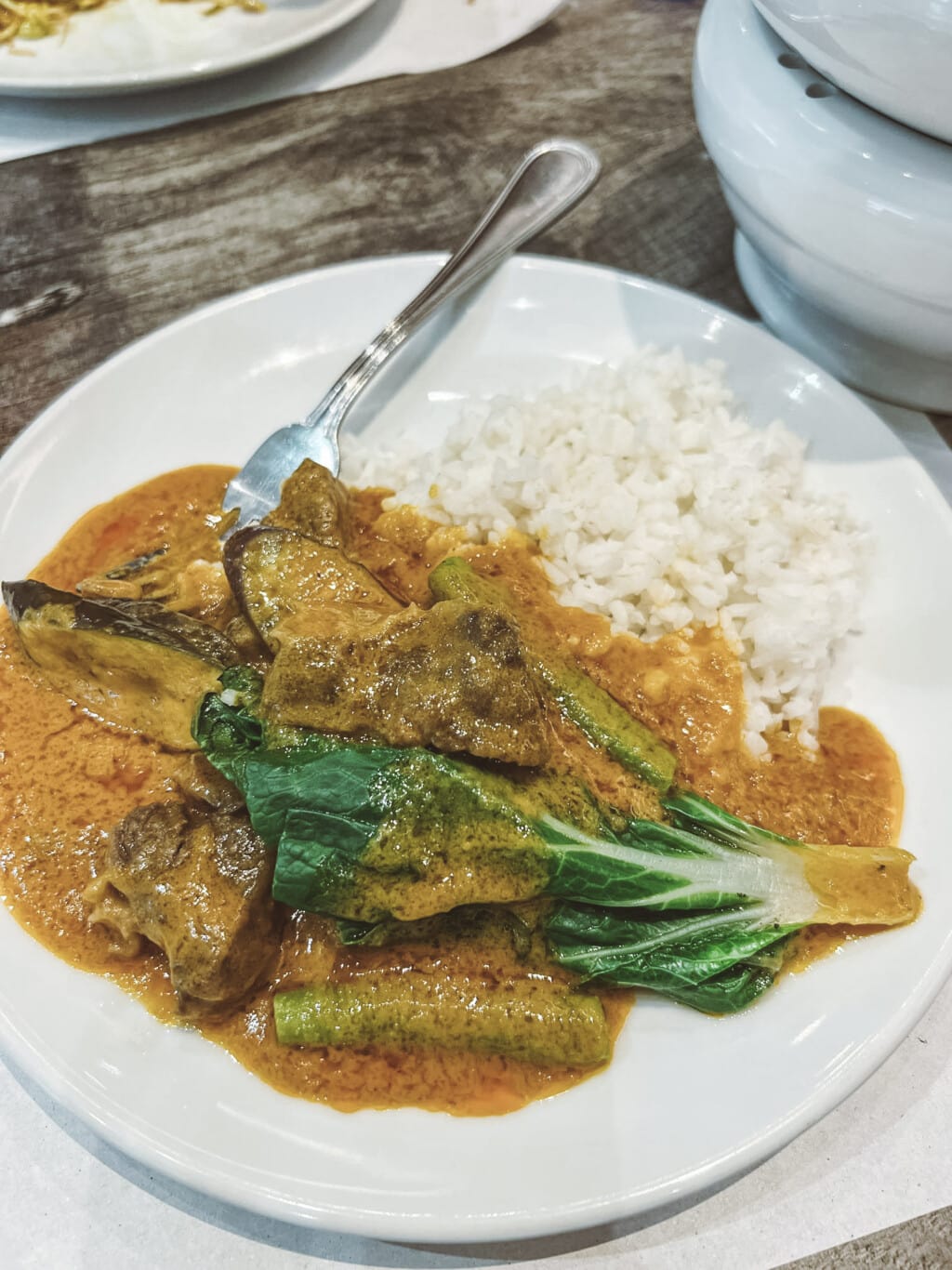
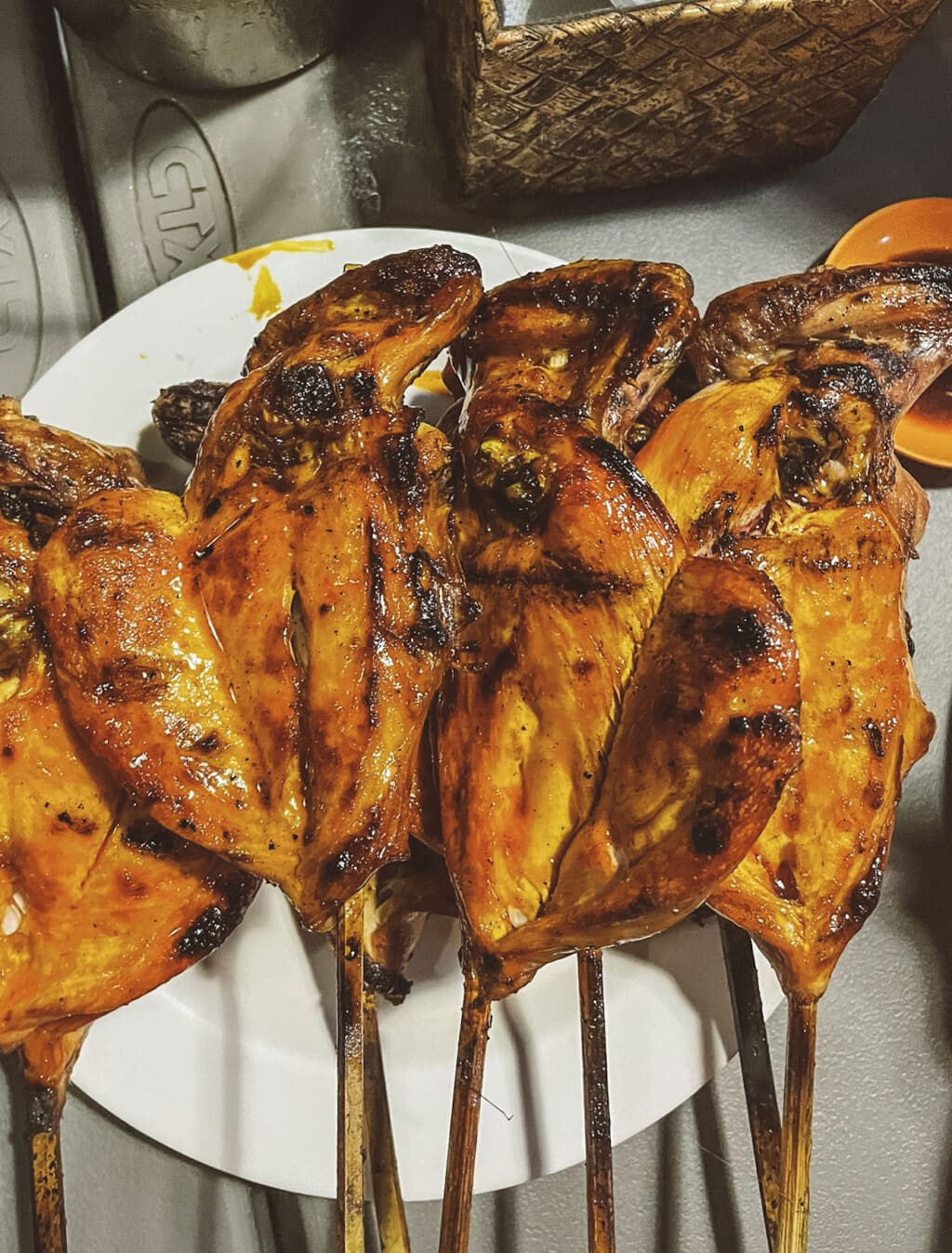
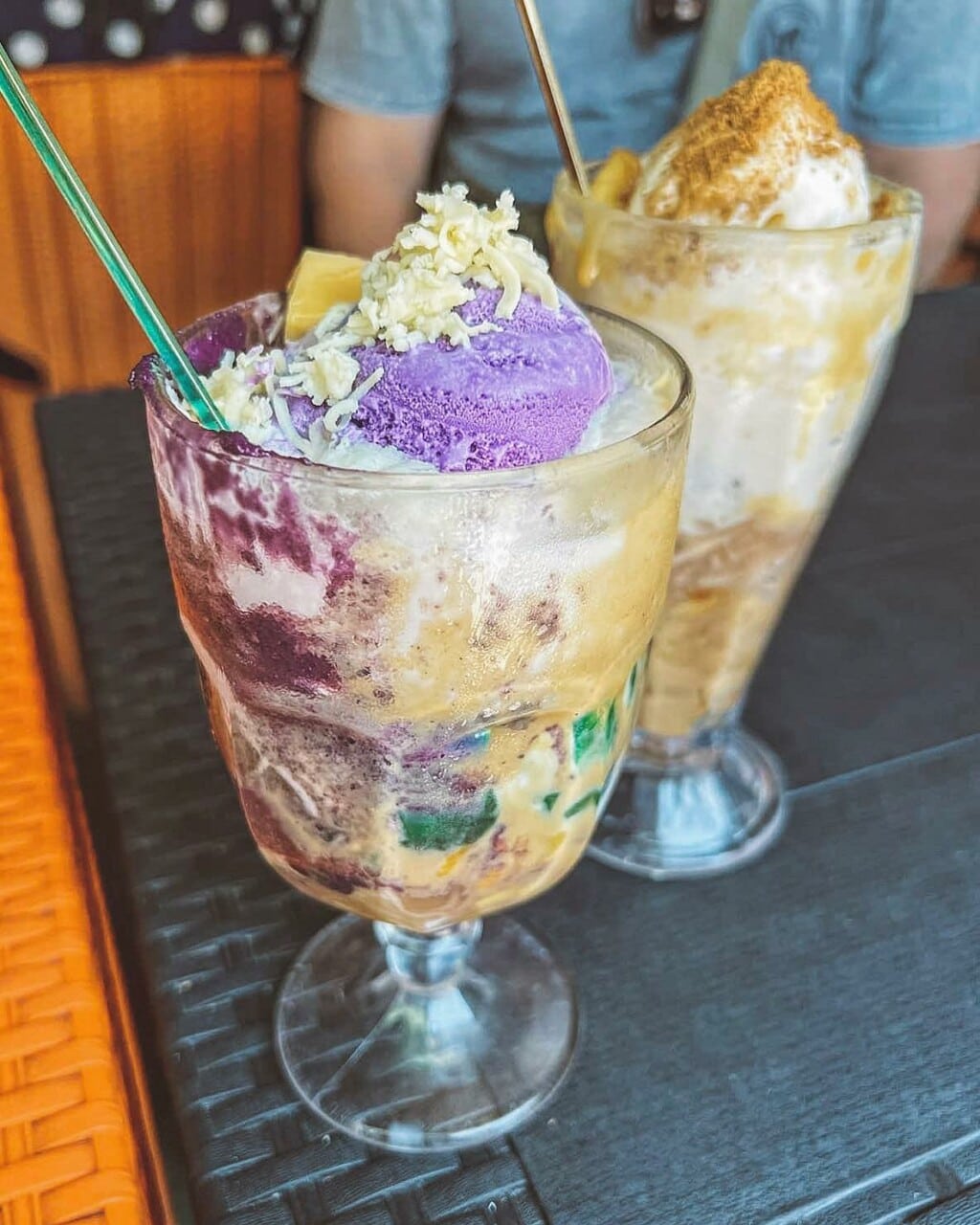
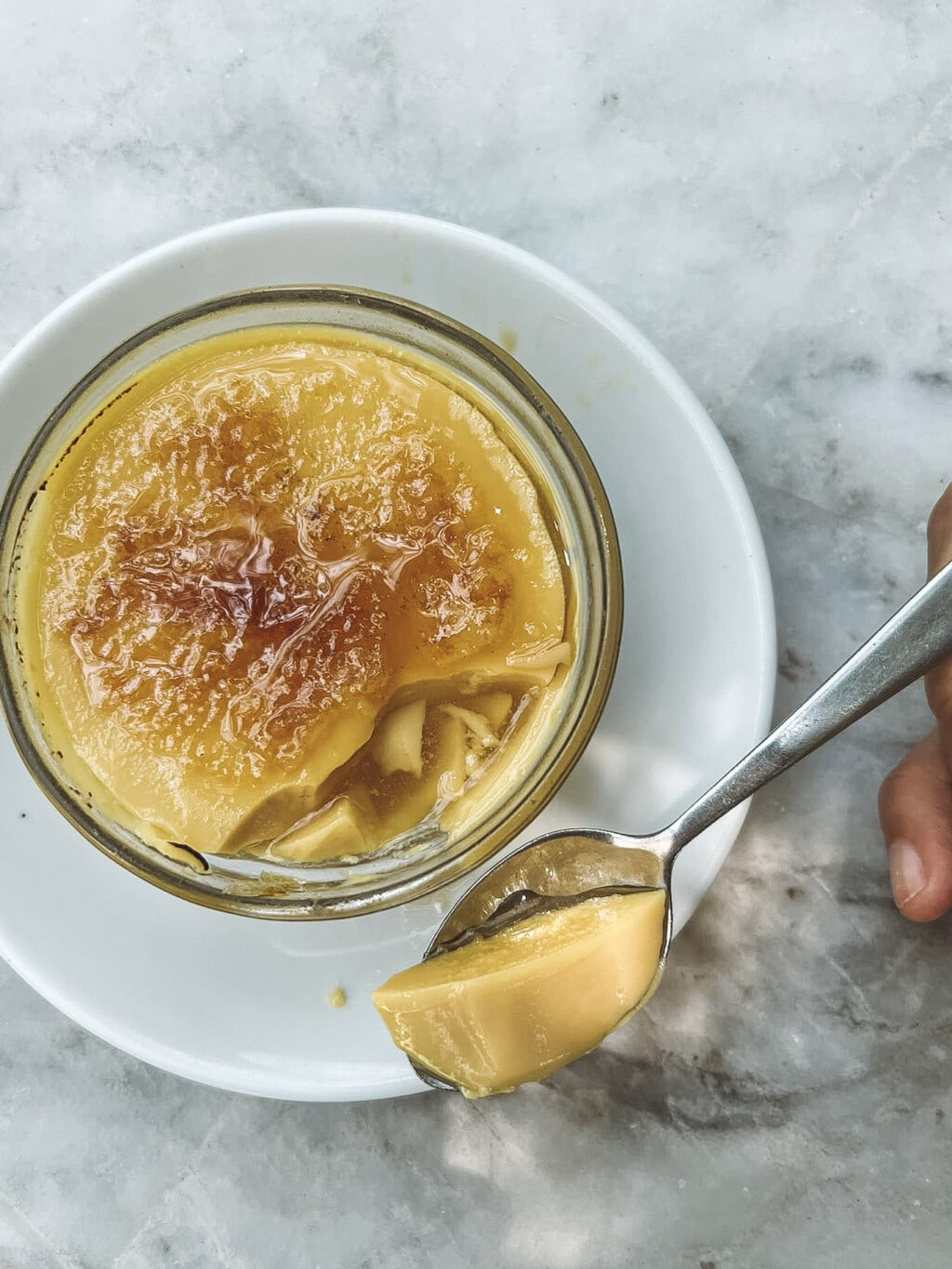
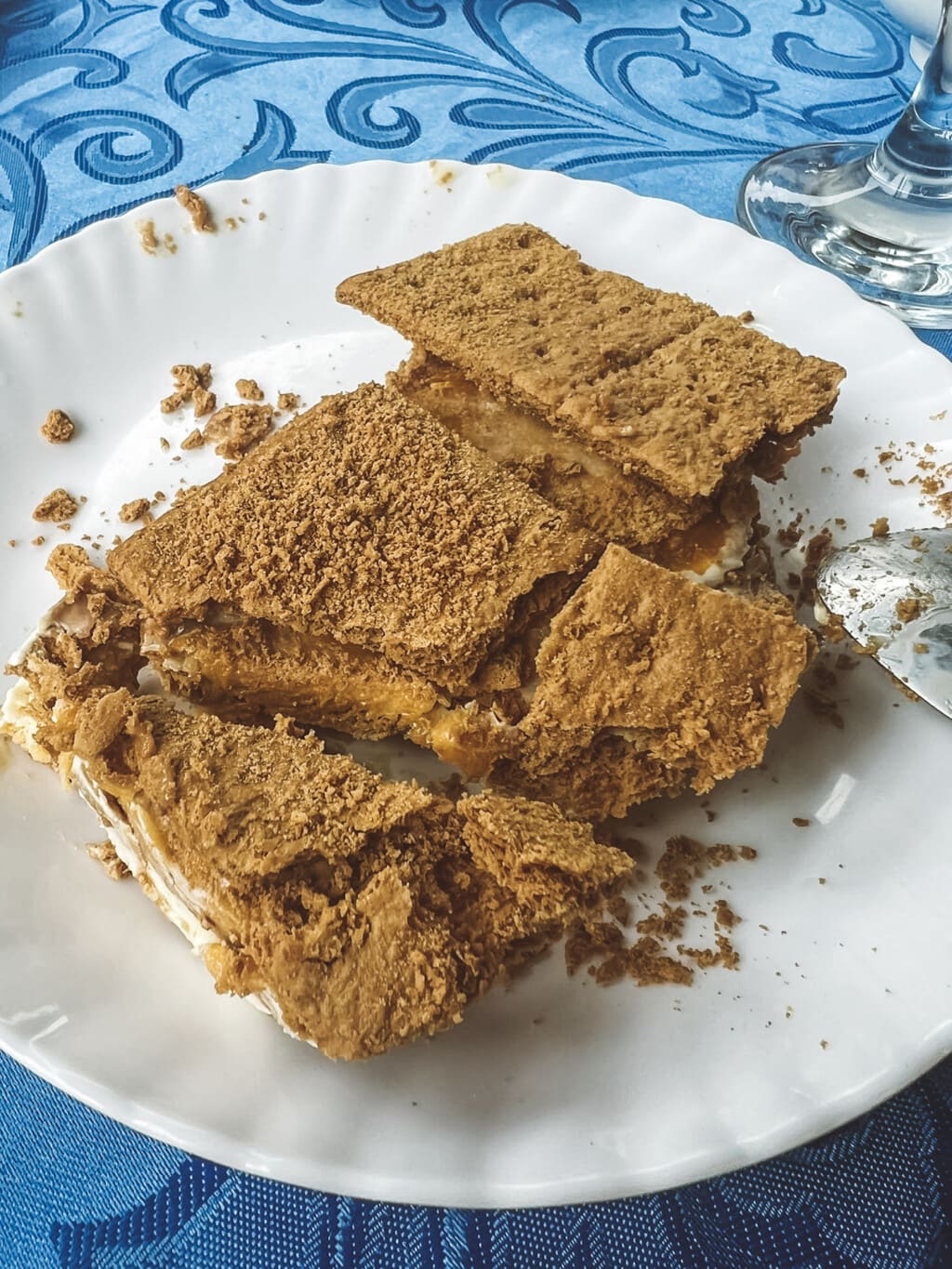
Wrap Up
Food serves as an incredible gateway to discovering a new culture, offering insights into its geography, history and the people behind it.
Although time was limited, and with many dishes to still try, we’ll be seeking Filipino restaurants back home to indulge in some newfound favourites — kare-kare, I’ve got my eyes on you.
Food aside, while we only visited three islands among the vast expanse of over 7,000, we were charmed by the Philippines – particularly the carefree nature of its people and their hospitality, the crystal clear island waters, and vibrant culture that envelopes you from the get-go.
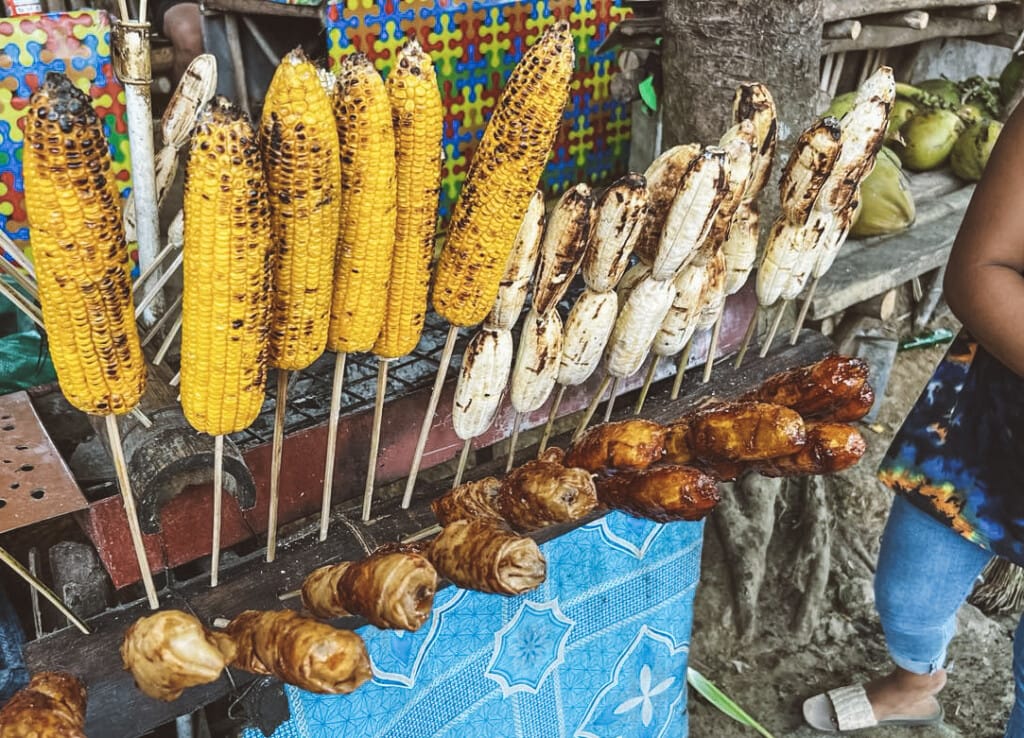
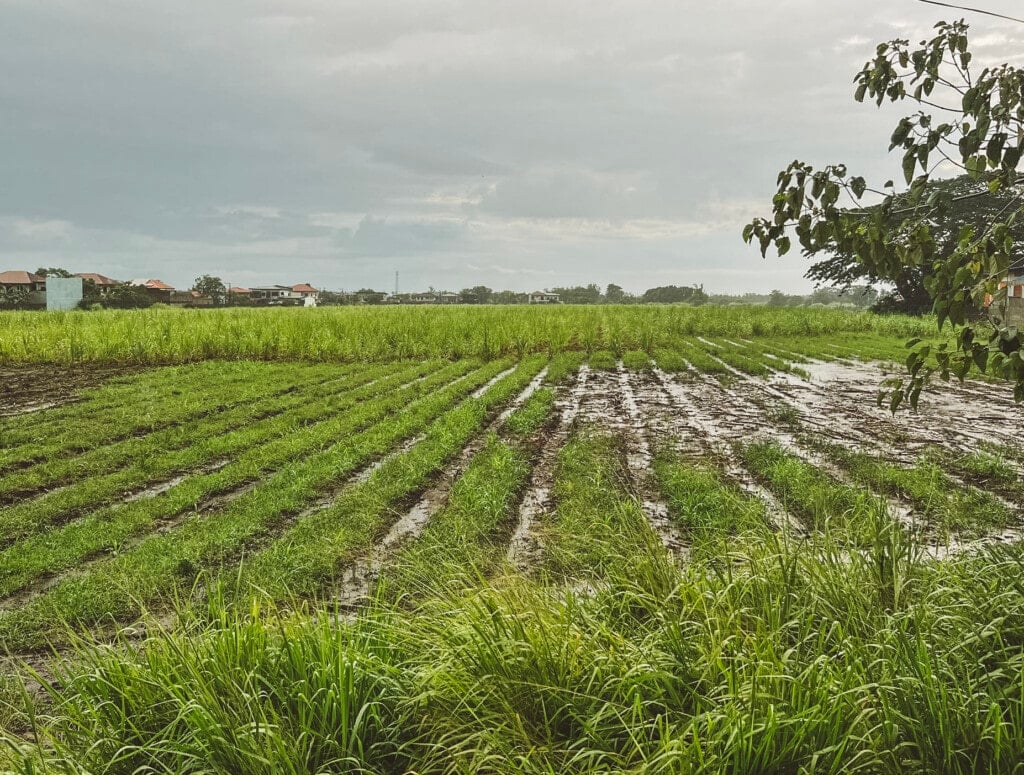
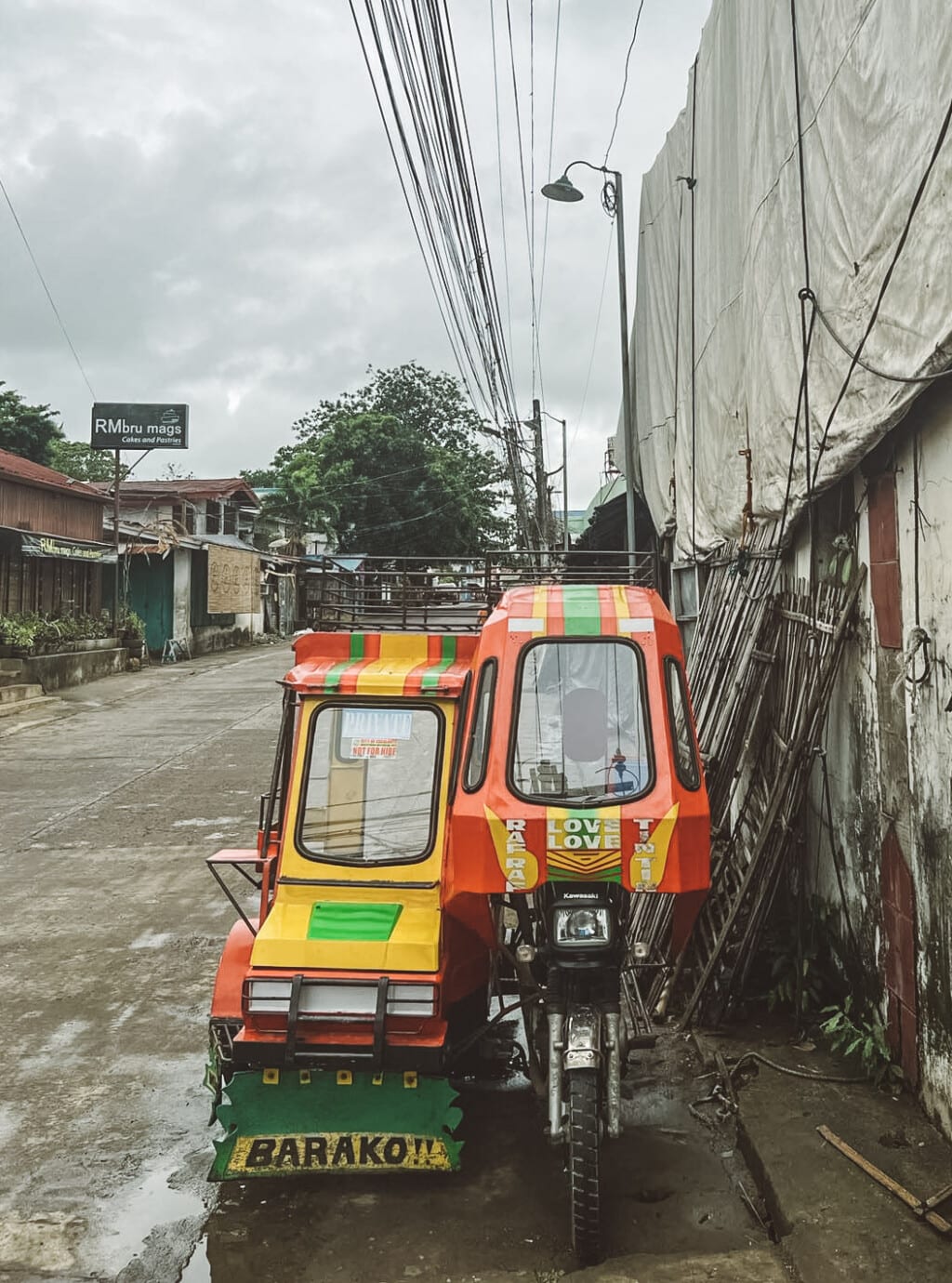
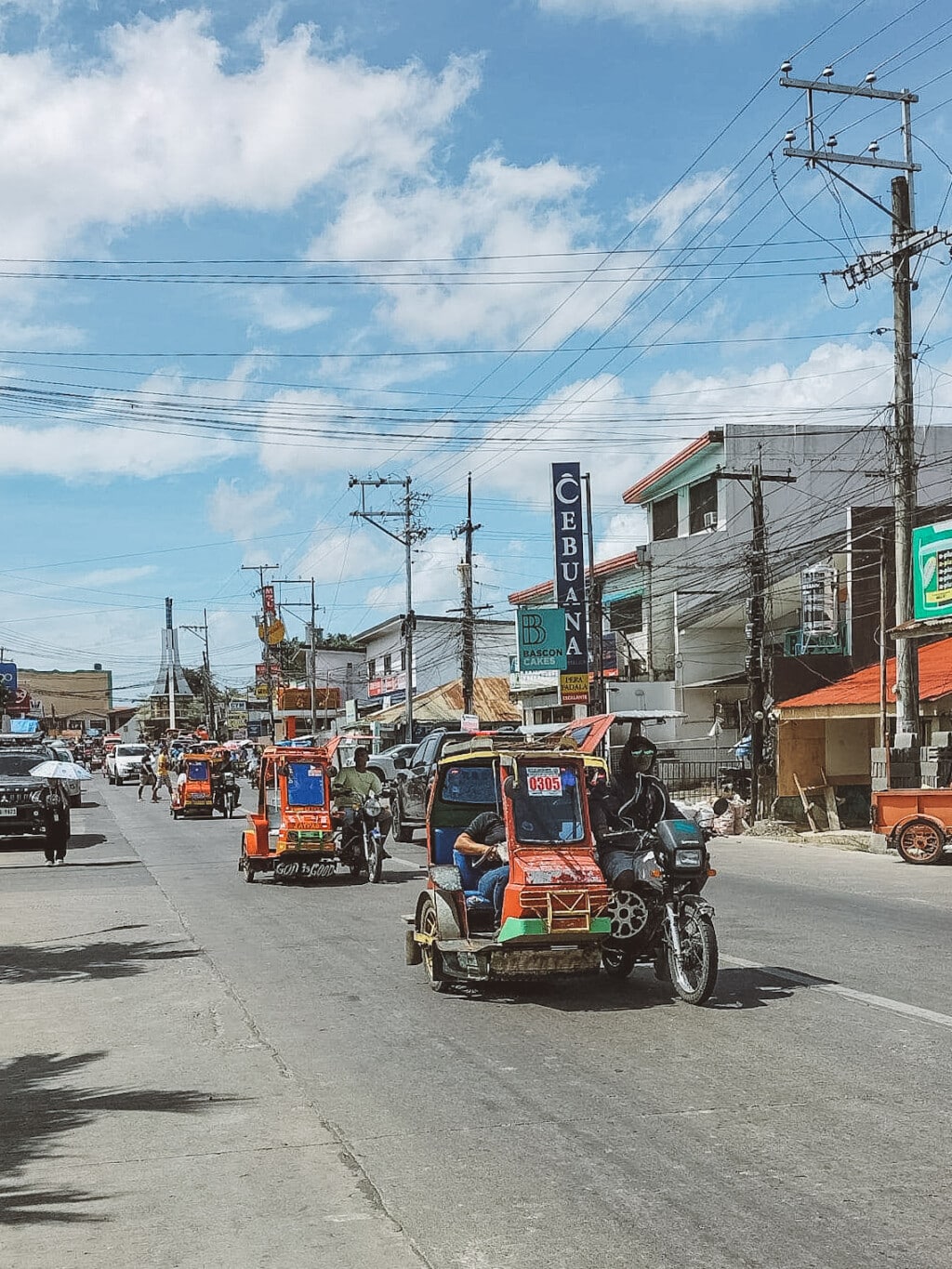
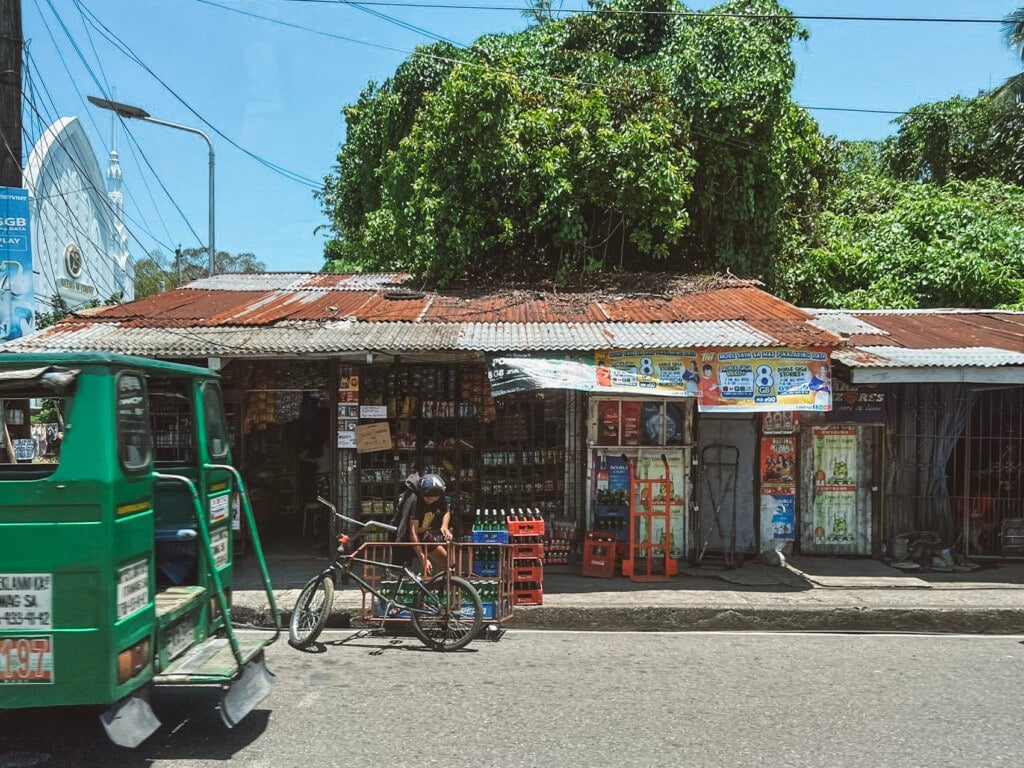

Thanks for reading about our foodie adventures in the Phillipines🇵🇭. Interested in learning about another cuisine through the eyes of a traveller? Check out my blog on our trip to Japan.


No Comments